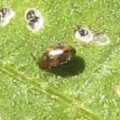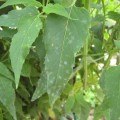Quick Intro
Physical Description
Bacterial disease of the fruit or tubers of a vegetable, characterized by watery and soft decay of the tissue.
Species & Taxonomy
- Kingdom:
- Phylum:
- Class:
- Order:
- Family:
- Genus Species: caused by several types of bacteria, but most commonly:
- Erwinia
- Pectobacterium
- Pseudomonas
Lifecycle
These pathogenic bacteria can grow at a wide range of temperatures (32-90°F) but thrive at 70-80°F. Wounds from harvesting or from insects can be infected with the bacteria, or the plant can be a host if infected as a seed. Even natural openings on the plant, such as stomata or lenticels, can be the route of entry for the pathogen.
Once infected, the bacterium reproduces itself and secretes pectolytic enzymes which break down the tissue in the fruit or tuber.
Once harvested and stored, one infected fruit or tuber will infect all of those nearby.
Plants Affected
Plants Unaffected
Geographical Range
Ideal conditions: 70-80°F
Signs & Symptoms
Whole Plant
Leaves
Flowers
Fruit
Roots/Tubers
How to Positively Identify
Treatment
Prevention & Control
Cultural Controls:
Habitat:
Temperature & Humidity:



